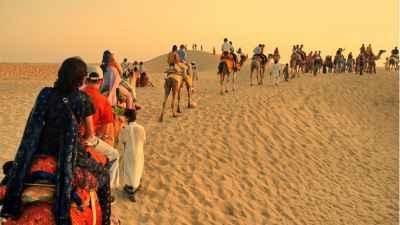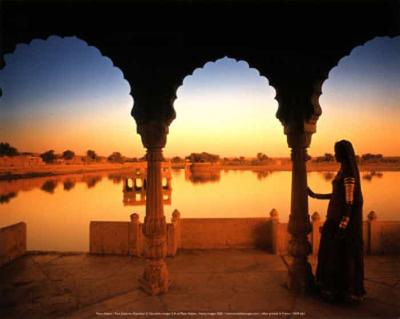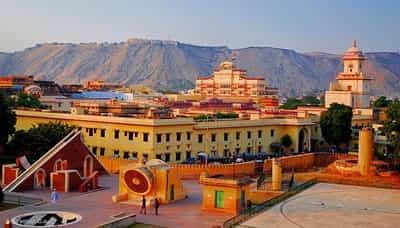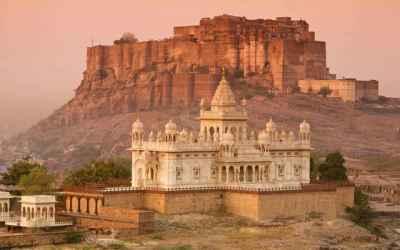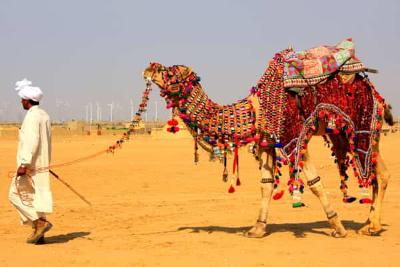Traditional Folk Music and Dance of Rajasthan for Group Enthusiasts
Rajasthan, the land of vibrant colors and rich cultural heritage, is renowned for its traditional folk music and dance. The state is a treasure trove of art forms that have been passed down through generations, reflecting the true essence of the Rajasthani culture. From the soulful melodies to the captivating dance performances, the traditional folk music and dance of Rajasthan have captivated the hearts of people from all over the world.
1. Ghoomar:
Ghoomar is one of the most famous folk dances of Rajasthan and is performed by women. This graceful dance form is characterized by its circular movements, vibrant costumes, and rhythmic clapping. The dancers wear colorful traditional attire, which includes a swirling skirt called "ghagra" and a veil called "odhni." The dancers move in synchronization, creating a mesmerizing visual spectacle.
2. Kalbelia:
The Kalbelia dance is a beautiful folk dance performed by the Kalbelia tribe of Rajasthan. This dance form is known for its graceful movements and quick footwork. The dancers, both men, and women, wear traditional black attire adorned with silver jewelry. The dance is accompanied by the haunting melodies of the "poongi," a traditional Rajasthani instrument.
3. Bhavai:
Bhavai is a folk dance that requires immense skills and balance. The performers balance multiple pots on their heads while dancing on a glass or metal surface. This dance form originated from the Bhavai community, who were traditional entertainers in Rajasthan. The dancers showcase their agility and precision as they move gracefully, captivating the audience with their talent.
4. Puppetry:
Puppetry is an ancient art form that has been practiced in Rajasthan for centuries. The puppets, also known as "kathputlis," are made from wood and cloth and are controlled by skilled puppeteers. The puppeteers tell stories through their puppets, accompanied by traditional folk music. The art of puppetry in Rajasthan is recognized and celebrated worldwide.
5. Langas and Manganiyars:
The Langas and Manganiyars are two professional groups of traditional Rajasthani musicians. The Langas are Muslims, while the Manganiyars are Hindus, and both groups have their distinctive style of music. Their performances include soul-stirring renditions of traditional songs, accompanied by instruments like the "sarangi" and "dholak." The melodious voices of the Langas and Manganiyars have earned them recognition and acclaim.
6. Chari Dance:
The Chari dance is a unique dance form that originated from the desert regions of Rajasthan. In this dance, the performers balance a pot filled with flaming oil on their heads. The dance is accompanied by folk music, and the dancers move gracefully, showcasing their skill and balance. The Chari dance is a symbol of bravery and strength.
7. Kathak:
Kathak is a classical dance form that originated in northern India, including Rajasthan. It is a storytelling dance form that combines elements of dance and music. The dancers perform intricate footwork, graceful spins, and expressive hand movements, narrating stories from Hindu epics. Kathak dancers are known for their versatility and technical expertise.
8. Kesariya Balam:
Kesariya Balam is a popular folk song that is associated with the state of Rajasthan. The song is about love and longing and is often performed during festivals and special occasions. The melodious tune and heartfelt lyrics of Kesariya Balam have made it a timeless classic in Rajasthani folk music.
Conclusion:
The traditional folk music and dance of Rajasthan are a testament to the state's rich cultural heritage. These art forms have not only preserved the traditions of the past but also continue to captivate and entertain audiences from all walks of life. The vibrant costumes, enchanting melodies, and energetic dance performances make Rajasthan a haven for all group enthusiasts. So, if you're planning a trip to Rajasthan, be sure to witness the magic of the traditional folk music and dance that will leave you enthralled and longing for more.
Share this article with your friends and family who love traditional folk music and dance!
Disclaimer : The information provided in this blog is for general informational purposes only. While we strive to keep the content accurate and updated, TravelSetu assumes no liability for errors or omissions. If you believe any part of this blog infringes your rights or causes concern, please notify us immediately at info[at]travelsetu[dot]com so that appropriate action can be taken.
